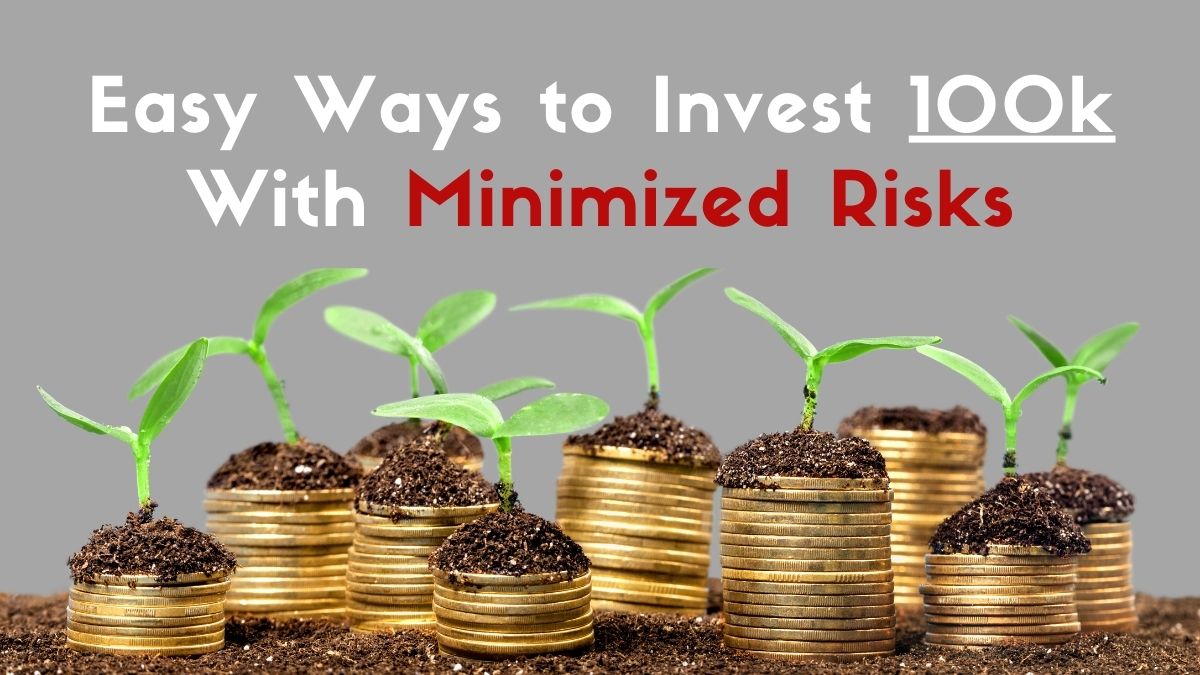Overview
Investment becomes problematic sometimes, right? But, it becomes easy when you understand the stop loss vs. stop limit. Many investors do not know how to protect their open positions in the stock market by using these orders.
Investors who want to restrict their future losses can use multifarious orders. There are two similar orders: stop loss vs. stop limit. These are frequently used but are slightly different from each other.
Stop Loss vs. Stop Limit
Stop-loss and stop-limit are used to reduce the volume of risk in investment. However, it is necessary to understand the basic difference between Stop- loss vs stop-limit, stop vs. limit order, stop market vs. stop limit.
Investors can use these tools to put them in any type of market condition. Though, To limit the downside orders, invest using stop orders.
Stop limit order is the type of stop loss. Although, at the stop price, the order becomes a limit order. A buy-stop order protects short positions. It is triggered if the price rises above the current market price.
Using stop-loss order, you don’t need to monitor your daily holdings. Long positions are protected by sell-stop orders, a type of stop-loss order by triggering a market sell order if the price falls below a particular order.
Once the stock reaches a specific price, a stop-loss order is a place to buy or sell the stock.
What is Stop Loss Order
Definition
A stop-loss order is a type of order placed with a broker to sell or buy a share when it reaches high prices. Stop-loss orders are designed in such a way that limits investors’ loss. The order becomes a market order if the stock falls below the stop price, and it will run at the next possible price.
A stop-loss order is defined as:
“A stop-loss order is a request to brokers to perform market transactions.”
Primarily, stop-loss orders are concerned guidelines that a trader provides to his agent. As early the stock prices cross the stop price, stop orders convert to a market order, which performs at the next available price.
A stop can be set at any rate and bound to follow guidelines to sell or buy the stock. The perfect example of a stop-loss order is to specify a sell order under the market rate of a stock an agent owns.
Example
Let’s suppose a trader who had stock in Porsche on March 31st, 2021, would see a market worth of their stock of 750$. A month before, that was trading 518$ on February 30th, 2021.
The trader will never sell the stock because of its upward movement, but they will also be seriously concerned about the rate dropping back. Still, the trader has an opportunity to replace a
at 700$.
In this situation, the tradesman will retain the stock as long the price is above 700$. But, whenever the price falls below the stop price, it gets sold.
Let’s take another real example of stop-loss to understand how it works. A middleman buys 200 shares of ABC for 200$, and he sets a stop-loss order at 190$.
Suddenly the stocks decline for over next few weeks and fall below 190$. The position can be sold at 189.95$, and the trader stop order gets executed.
Where Stop Loss Order Are Used
Stop-loss orders are used in many cases to avoid investor losses when the price of a share drops.
Stop-loss orders are used to protect your position from sharp declines. The idea of stop loss is used in different seniors. Let’s say, if you think there is a risk, the stock will drop by 10%, but the stock price is rising. Now you don’t want to sell, and you can put a stopping place 5% below the current price.
If the current price is a hundred $100 and you have placed a 95%, and the stock falls to 90$. The stop loss would turn into a market order of 95$, but if the value is rising, you will feel delighted.
Stop Loss vs. Stop Limit Order
The basic difference between stop loss and Stop limit strikes the Stop.
- The order becomes market order with a stop loss.
- The order becomes a limit order with a stop limit.
The indication of becoming a limit order vs. market order becomes appreciable.
The broker runs the trade as fast as possible with a market order. The broker will get you the best price they can. But, they will never wait sitting around while waiting for the best price to rise.
At the market price, the market order gets traded. The market price changes considerably when the stop loss is triggered, and the time it is filled.
At a price below the stop price, a sell-stop order might get a fill. It is only possible if the stock price falls very fastly. If the price is rising quickly, the buy-stop loss gets filled above the stop price. Brokers run your trade if they can beat the limit price with a limit order.
Stop-limit Order Protects Against Market Volatility
Trading in a volatile market stop-limit order protects against market volatility. Sometimes the stocks that closed at 60$ and on the next day opening it starts at 40$. This type of volatility can cause heavy loss and also occurs gaps, and they cannot be ignored. Therefore, stop vs limit order works as a shield to protect you from those losses resulting from gaps.
A limit order provides a sale or a purchase of protection at a specific price from losses.
Stop Limit Order Prevents Excessive Bleeding
There is a reason why you use stop-limit order because of your effort to maintain control over a transaction as much as you can. You control when to put an order to buy stocks and when you are willing to put a maximum amount of money.
It also helps you prevent losses and keep your losses getting out of control while selling your shares. This is how it prevents you from heavy losses while dealing with a volatile market.
Stop Loss Order Guarantees Transactions
We are considering a lot of things while deciding whether to buy or not to buy a stock. The stop-loss order works when appropriately used, and it can make a lot of difference.
A Lot of investors get profit from implementing stop-loss orders. It is designed in such a way as to limit an investor’s loss. Moreover, it is a simple tool despite a lot of investors failing to use it efficiently. For preventing heavy losses and when to lock in profits.
Stop Limit Can Become Liability
There is a condition in which a stop-limit order becomes a liability. If a share settles at 6$ after a day of trading stock and never recovers, the order will never go through, and you have lost the opportunity of selling it for 8$.
Let Financial Advisors Guide You
Suppose you want to make sure that your hard money is put in the right direction. You always need someone who has the time, skill, and expertise to analyze the stocks. Most of the investors are busy working from dawn to dusk.
Stopping a market is always a threatening place for investors, especially for the new one. But if you invest for a long time, it becomes easy for you to buy and sell stocks. There are a lot of platforms that are buying and selling stocks like apps, brokers, etc.
In such a world of the contraption, a vast crowd wishes to dabble in stocks. At the same time, there is a great demand. With the experience of new investors coupled with the relief of buying stocks, the senior investors are totally concerned about them. So, therefore, to analyze and pick a stock, you must contact an experienced and expert financial advisor.
Frequently Asked Questions (FAQs)
What is the difference between stop loss and stop-limit?
Primarily both are used to protect investors from losses. But, there is a slight difference between both of them. A stop loss is a predefined specific price point used to sell an asset when the asset reaches that predefined specific point. It is used to limit the loss.
A predefined maximum and minimum price limit traders set to buy to sell the share. We have two prices involved in the stop limit.
What is a stop-loss limit?
It is a feature that is a combination of both stop loss and stops limit. With the help of a stop-loss limit, we can guarantee both execution and price as well.
Stop losses are used to limit the investor’s loss, different from the stop limit position. The order becomes a market order if the stock falls below the stop price, and it will run at the next available point. e.g., a trader buys a stock and places a stop-loss order below 10% of the purchased price.
What is meant by stop-loss?
Stop-loss is a combination of Stop and loss, which indicates stopping the investor’s share from maximum loss. Advance order is set to sell an asset when it reaches a predefined point. In stop-loss, we set an advance order to sell an asset when it reaches a specific point. With the help of stop-loss, we can limit the loss and gain in trade.
What is a stop limit?
A stop limit is a combined feature of Stop and limitation and is used to lessen the risk. It shows when the order will fill, but it does not tell when the order is executed. To avoid losses and gain profit, traders use stop vs stop-limit orders to lock in profit and limit downside losses.
How do you set a stop limit?
Traders constantly need the setting of two price points.
1.The starting target price for the trade.
2.The outsider’s target for the trade.
A time frame must be set in order to know which stop limit is considered for execution.
What is the maximum amount for a cashier’s check?
The bank only issues a cashier bank. It is similar to a money order, but the fundamental difference is the maximum dollar limit. The maximum amount for the cashier’s check is 1000$. A cashier’s check is guaranteed not to be bounced.
There is no delay in confirming that the check will be cleared while making a payment to the payee.




